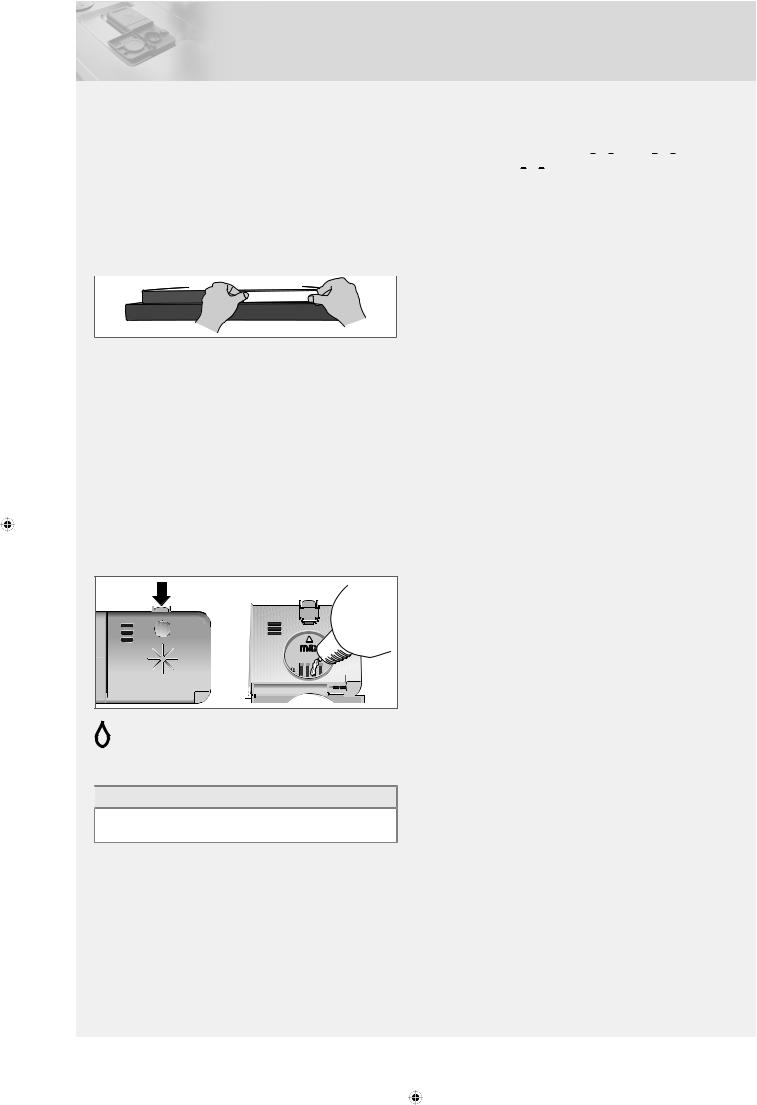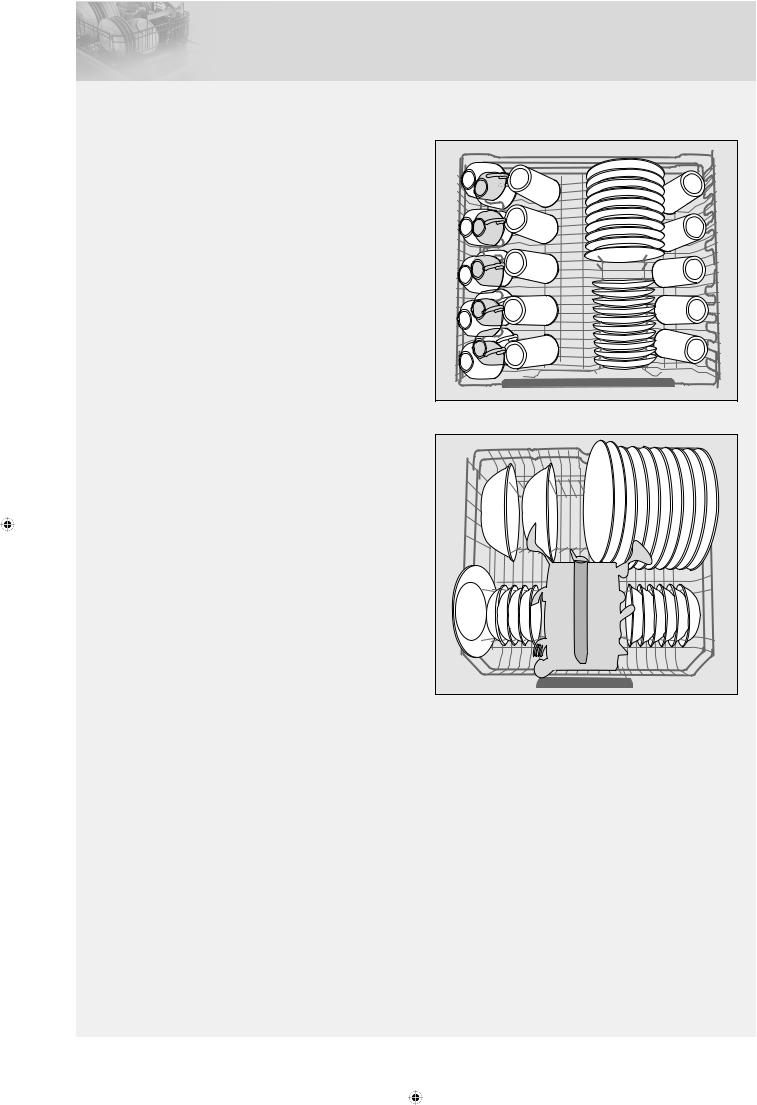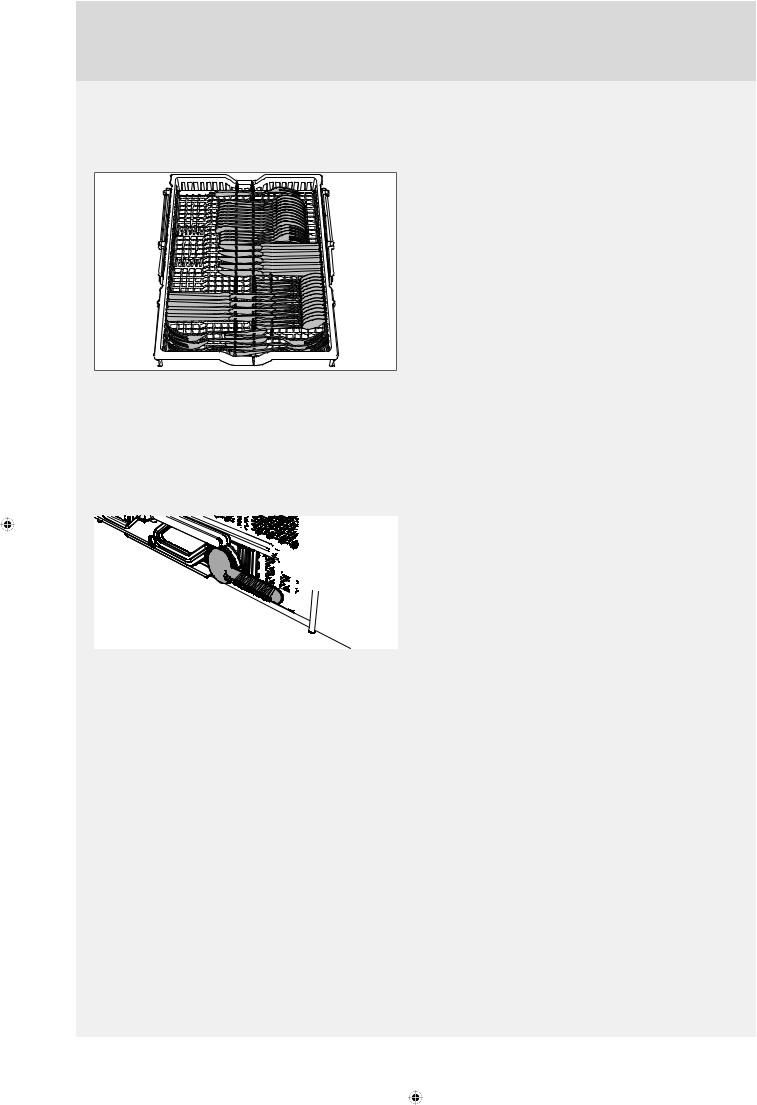Asko D5636XXL User Manual

Dear Customer,
Thank you for choosing this quality product from ASKO.
We hope it will meet your expectations and fulfill your needs for many years to come. Scandinavian design combines clean lines, everyday functionality, and high quality. These are key characteristics of all our products and the reason they are greatly appreciated throughout the world.
To get the most out of your new dishwasher, we recommend that you read the operating instructions before using it. The operating instructions also include information on how you can help protect the environment.
Do you need this Use&Care Guide in spanish? Log onto
www.askona.com/customer-care to download.
¿Necesita esta Instrucciones de uso y cuidado en español? Entre en www.askona.com/customer-care y descárguesela.
Operating Instructions
Dishwasher
ASKO D5636XXL

Contents
Front panel |
2 |
Care and maintenance instructions |
12 |
Important safety instructions |
3 |
Troubleshooting |
14 |
Before washing for the first time |
4 |
Technical information |
17 |
Loading the dishwasher |
5 |
Service |
18 |
Using the dishwasher |
7 |
Program chart |
19 |
Settings |
10 |
|
|
Front panel
|
|
|
|
|
|
|
|
|
|
|
|
|
|
|
|
|
|
|
|
|
|
|
|
|
|
|
|
|
|
|
|
|
|
|
|
|
|
|
|
|
|
|
|
|
|
|
|
|
|
|
|
|
|
|
|
|
|
|
|
|
|
|
|
|
|
|
|
|
|
|
|
|
|
|
|
|
|
|
|
|
|
|
|
|
|
|
|
|
|
|
|
|
|
|
|
|
|
|
|
|
|
|
|
|
|
|
|
|
|
|
|
|
|
|
|
1 |
2 |
3 |
4 |
5 |
6 |
7 |
8 |
9 |
|
10 |
|||||||||||
1 |
On/Left-on mode |
|
|
|
|
|
5 |
|
Rinse aid indicator |
|
|
9 |
Delayed start |
|||||||||
2 |
Program selector |
|
|
|
|
|
6 |
|
Child lock (button lock) |
|
|
10 |
Start/Stop |
|||||||||
3 |
Program symbol |
|
|
|
|
|
7 |
|
High temperature |
|
|
|
|
|
||||||||
4 |
Display |
|
|
|
|
|
|
|
8 |
|
Long dry |
|
|
|
|
|
|
|
||||
The panel is fitted with touch buttons with audible feedback (see the chapter Settings).
 NOTE!
NOTE!
•Two minutes after the last button press, the panel backlight enters energy saving mode. Close and reopen the door, or press the On/Left-on mode button, to reactivate the panel.
2

Important safety instructions
SAVE THESE INSTRUCTIONS FOR FUTURE REFERENCE

 WARNING!
WARNING!
When using your dishwasher, follow basic precautions, including the following:
•Read all instructions before using the dishwasher.
•Use the dishwasher only for its intended function.
•Use only detergents or wetting agents recommended for use in a dishwasher and keep them out of the reach of children.
•When loading items to be washed:
–locate sharp items so that they are not likely to damage the door seal, and
–load sharp knives with the handles up to reduce the risk of cut-type injuries.
•Do not wash plastic items unless they are marked “dishwasher safe” or the equivalent. For plastic items not so marked, check the manufacturer’s recommendations.
•Do not operate the dishwasher unless all enclosure panels are properly in place.
•Do not tamper with controls.
•Do not abuse, sit on, or stand on the door or dish rack of the dishwasher.
•To reduce the risk of injury, do not allow children to play in or on a dishwasher.
•Under certain conditions, hydrogen gas may be produced in a hot water system that has not been used for two weeks or more. HYDROGEN GAS IS EXPLOSIVE. If the hot water system has not been used for two weeks, before using the dishwasher turn on all hot water faucets and let the water flow from each for several minutes. This will release any accumulated hydrogen gas. As the gas is flammable, do not smoke or use an open flame during this time.
•Remove the door to the washing compartment when removing an old dishwasher from service or discarding it.
•Read the grounding instructions in the installation instructions.
General
•Do not run the dishwasher while you are out of the home.
•Do not store or use combustible materials, gasoline, or other flammable vapors and liquids in the vicinity of this or any other appliance.
•Disconnect electrical power to dishwasher before servicing.
•Repairs should be done by a qualified technician.

 WARNING!
WARNING!
This product may contain chemicals known to the state of California to cause cancer or reproductive harm.
Child safety
 TIP!
TIP!
Dishwasher detergents and rinse aids are corrosive, so always keep them out of reach of children.
•Should a child swallow dishwasher detergent or rinse aid, give plenty to drink immediately, i.e., one or two glasses of milk or water. Do not try to induce vomiting. Seek medical advice immediately: Call the National Capital Poison Center at 1-800-222-1222.
•Always close the door and start the dishwasher as soon as you put in the detergent.
•Always keep small children away from the machine when it is open. There may be some detergent residue left inside the machine.
•If dishwasher detergent gets in someone’s eyes, rinse them with plenty of water for at least 15 minutes.
Activate child lock (Kid Safe™)
You can activate the child lock (button lock) to prevent children from starting the dishwasher (see the section Settings).
Winter storage/Transport
•Store the dishwasher where the temperature remains above freezing.
•Avoid long transport distances in very cold weather.
•Transport the dishwasher upright or laying on its back.
Overflow guard function
The overflow protection starts pumping out the machine and turns off the water supply if the water level in the dishwasher exceeds the normal level. If the overflow protection is triggered, turn off the water supply and call the Customer Care Center.
Care and maintenance instructions
When cleaning the edge around the door, use only a slightly damp cloth. Do not spray water around the edge! Moisture can make its way into the lock, which contains electrical components.
Packing material
Please sort waste materials in accordance with local guidelines.
Disposal
•When the machine has reached the end of its service life and is to be disposed of, it should immediately be made unusable. Pull out the power cable and cut it as short as possible.
•The dishwasher is manufactured and labeled for recycling.
•Contact your municipality for information about where and how your dishwasher can be recycled correctly.
3

Before washing for the first time
Water supply
The machine can be connected to either a hot (max. 160 °F, 70 °C) or cold water supply. We recommend a cold water supply. The water pressure should be 4.2-140 psi. See also the section Economic dishwashing in the chapter Loading the dishwasher.
Program key
Some dishwashers include program keys in different languages. Attach the program key in the appropriate language to the top of the door.
Checking water hardness
Contact the local water utility to check the water hardness in your area. This is important to determine how much detergent and rinse aid to use.
Fill with rinse aid
Use rinse aid to improve wash and dry times. Also use rinse aid to achieve clear and spotless results.
1 Open the rinse aid compartment lid.
2Carefully top up with rinse aid. Only add rinse aid to the level marked max.
3 Wipe up any spilled rinse aid around the compartment.
4 Close the lid firmly.
Refill rinse aid indicator
When the rinse aid needs topping up, the above symbol lights on the display.
 NOTE!
NOTE!
After topping up, it may take a while before the symbol goes out.
Setting the rinse aid dosage
The section Settings describes how to set rinse aid amount. The rinse aid amount can be set from 

 (Off) to
(Off) to 


 (High dose). (Factory settings:
(High dose). (Factory settings: 


 )
)
Increase the rinse aid dosage:
• If the dishes have water marks.
Reduce the rinse aid dosage:
•If the dishes have a sticky white/blue film.
•If the dishes are streaked.
•Heavy foaming. If you have very soft water, the rinse aid can be diluted 50:50 with water.
4

Loading the dishwasher
Economic dishwashing
Run programs only with a full load
Wait until the dishwasher is fully loaded before running a program, this way you save energy. Use the Rinse & Hold program to rinse the dishes if there are any unpleasant odors while you wait for the dishwasher to become fully loaded.
Run programs at a lower temperature
If the dishes are only lightly soiled, you can select a lower temperature with certain programs. See also the section Selecting Options in the chapter Using the dishwasher.
Select a program with the option Short dry
To save energy, use Short dry. The drying result will be better if, once the program is finished, you leave the door slightly open.
Do not rinse under running water
Simply scrape off large food particles before loading the dishwasher.
Choose a green detergent
Read the environmental declaration on the packaging!
Connect to cold water...
If you use oil or electricity to heat your home.
Connect to hot water (max. 160 °F (70 °C))...
If you use district heating, solar power, or geothermal power to heat your home. Choosing a hot water connection cuts program times and reduces the dishwasher's electricity consumption.
Fragile dishes
Some cookware is not dishwasher safe. This can be for several reasons. Some materials cannot withstand high temperatures, others can be damaged by dishwasher detergent.
Fragile decoration
Porcelain with decoration on top of the glazing (the items feel rough) should not be washed in a dishwasher.
Crystal/Glass
Position items so they do not touch during operation. Use a short program with the lowest possible wash temperature. Select Short dry. Do not wash fragile items in the dishwasher.
Glass washed at high temperatures can develop a gray film that cannot be removed. Wash fragile glasses at a low temperature with a small amount of detergent.
Silver
Silver and stainless steel items should not come into contact, as the silver can become discolored.
Cutlery with glued handles
Some types of glue are not dishwasher safe. In such cases, the handles may loosen.
Wood
Wooden items should only be washed in a dishwasher if marked dishwasher safe.
Aluminum
Aluminum can lose its shine if washed in a dishwasher. However, good quality aluminum pans can be washed in a dishwasher, even if some of the shine will be lost.
Plastic items
Avoid washing plastic items that cannot withstand high temperatures.
Typical load for 10 place settings
Upper basket with 10 place settings AHAM DW-1
Lower basket with 10 place settings AHAM DW-1
The baskets
The dishwasher includes a top cutlery tray, an upper basket, and a lower basket with a cutlery basket.
5

Top cutlery tray
The top cutlery tray accommodates cutlery, ladles, whisks, and other utensils.
Raising the top cutlery tray
1 Remove the top cutlery tray.
2Pull the two locking handles forward on each side to raise the top cutlery tray.
Lowering the top cutlery tray
1 Remove the top cutlery tray.
2Slide the two locking handles down and back to lower the top cutlery tray.
Lower basket
Place plates, side plates, serving dishes, pots, and cutlery (in the cutlery basket) in the lower basket.
Place pots and pans in the right rear of the lower basket for the best cleaning results from the two rear spray nozzles (Power Zone™ Pot & Pans), which are intended for these types of dishes.
Foldable tines
Lower the foldable tines when washing large pots.
Upper basket
Place glasses, cups, bowls, side plates, and saucers in the upper basket. Place all soiled surfaces down! Place wine glasses on the wine shelf. Place knives on the knife stand, if applicable.
Washing large plates
Move adjustable tines and their mounts to widen the distance between the tine rows to adapt the lower basket to plates with a diameter greater than 9 3/4" (25 cm).
Cutlery basket
Place cutlery with the handles facing down, except for knives, and spread them out as much as possible. Ensure that spoons do not stack inside each other.
The cutlery basket is best placed in the middle at the front of the lower basket to best utilize dishwashing performance from the unique spray nozzle (Power Zone™ Cutlery), which is intended for the cutlery basket.
6
